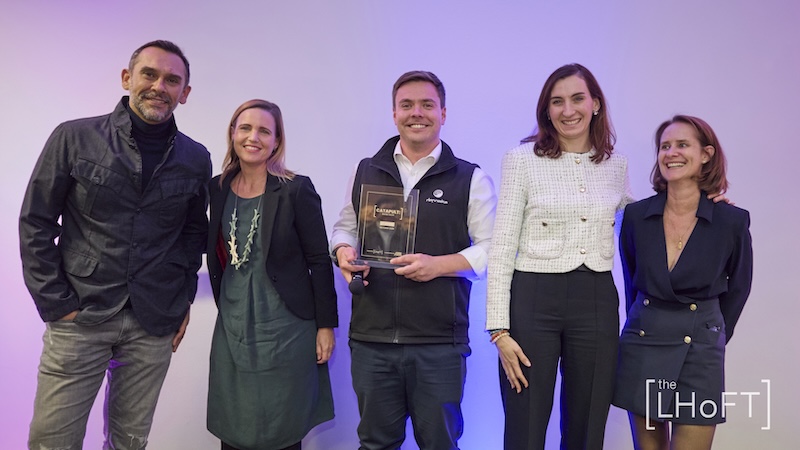I. Unraveling the Secrets of the Metaverse: origins and evolution
“Interesting things happen along borders—transitions—not in the middle where everything is the same”. – Neal Stephenson, Snow Crash
The Metaverse is regarded as the next iteration of the internet where avatars play in virtual reality (VR) and augmented reality (AR) realms, beckoning curious souls to explore with their smartphones, VR headsets, and other devices.
The term “Metaverse” was first coined by Neil Stevenson in his 1992 novel, « Snow Crash », where his characters sought refuge from a bleak and totalitarian reality by immersing themselves in the wonders of the metaverse.
However, in the present day, the metaverse remains largely uncharted, with competing visions of its ultimate form and of which technologies shall be harnessed to bring it to life.
It was argued that Second Life, created by Linden Labs 10 years ago, was the first attempt at a populated online community with an immersive environment. However, rather than transferring real-life events online – such as a job interview or a university’s open house event –, it created an alternative life for its users.
The current version of the Metaverse seeks goals far beyond an immersive digital experience. For individual users, the Metaverse aims to offer an opportunity to work, connect, or buy real or virtual items. Although the venture is viewed as the next phase of the internet, big companies such as Disney, Microsoft, and Snapchat have recently halted their plans for it. In fact, Disney has quietly abandoned its once-ambitious vision for the Metaverse, following in the footsteps of other major corporations that have downsized their dedicated teams.
Despite these setbacks, the Metaverse remains an innovative space where the physical and digital worlds can converge, providing limitless opportunities for interconnected virtual communities – if its builders are able to tackle the rising challenges in the context of worldwide economic turmoil.
During the keynote entitled “From Snow Crash to Creating the Framework for a Truly Open Metaverse” Neal Stephenson, co-founder of Lamina1, presented the required “roadmap” in simple terms: to achieve a successful long-term vision for the metaverse, it is crucial to focus on short-term goals and challenges, such as building a user base and creating engaging experiences. In the next 10 years, the Metaverse needs to offer experiences that millions or billions of users can enjoy. People currently working in the gaming, film, and television industries have the skills to create these experiences, but they need a way to get paid for their creations. The recent abandonment of royalties by major platforms, such as OpenSea and Meta, is troubling for artists and creators who rely on these royalties to earn a living from their work. This highlights the need for better systems to support and compensate designers in the metaverse.
This brings us to the concept of Non-Fungible Tokens. NFTs are unique digital assets that provide ownership, authenticity, and provenance for various items such as collectibles, virtual real estate, and art. NFTs are built on blockchain technology, making them secure, easily transferable, and distinct from other tokens.
Unlike cryptocurrencies such as Bitcoin or Ethereum, NFTs are non-interchangeable, as each token has unique features that differentiate it from others, in the manner of art pieces. The Ethereum blockchain is the most widely used platform for creating and trading NFTs, and their rarity has led to a booming market, with collectors and investors willing to bid significant amounts of money for certain NFTs. This market has opened new revenue streams for digital artists and creators, which was previously not possible.
There are several companies still investing in the Metaverse. Some of the top companies investing billions in the Metaverse include Epic Games, Unity, Microsoft, Yuga Labs/Improbable, Roblox, Nvidia, and Google. According to Mobile Magazine, “Google has invested $39.5mn into a private equity fund for metaverse projects [since January 2022], making it a key player in the global investment game”.
II. Regulation and Innovation in the Metaverse
Enlightened on the origins and status of the Metaverse in 2023, I then joined the “Metaverse Regulation: Do’s and Don’ts” presentation animated by Andy Albertson, partner at Fenwick; Philippe Rodriguez, co-president of Metacircle; Emmanuel Moyrand, vice-president of France Meta; Julie Jacob, founding lawyer at Jacob Avocats and Arnaud Pelletier, director at IBM Consulting France.
All the panel members shared their definitions of the Metaverse: it was either
1) a combination of technology, blockchain, and extended reality (AR/VR) augmented by AI;
2) a new world with similar structures to gaming, offering opportunities for banks, businesses, and ethical roles;
3) a social engagement built on top of a native blockchain protocol;
4) a broader definition including various use cases such as healthcare, industry, gaming, and entertainment.
The billion-dollar question raised was: “which laws can apply in the metaverse? » The answer proved complex due to the Metaverse being without boundaries.
On jurisdictional issues, the regulation of the Metaverse depends on the location of the user and the general regulation in each region, notwithstanding the existing terms and conditions of each platform within those frameworks. Pressing regulatory challenges include identity, security, intellectual property, interoperability, and terms of use; not to forget, core principles such as security, majority age, and privacy are the same for Metaverse platforms as they are for other platforms like social media. Addressing these challenges requires a global approach, considering different jurisdictions and legal components that may greatly vary.
Another key challenge arises when monetization and cryptos/NFTs are involved, as regulators need to be educated about these new digital assets. The base-level non-disclosure agreement for each legal component must be considered when building complex systems like the Metaverse. Despite this rigid, necessary framework, governments should lend an ear to businesses to understand and regulate the Metaverse without stifling innovation. The risk of overregulation might prevent companies from experimenting and adopting the Metaverse, potentially limiting its growth.
Finally, The Hermes vs. MetaBirkin case sets a precedent for protecting intellectual property rights in the Metaverse. According to Reuters, a federal jury in Manhattan ruled that an artist’s NFT versions of Hermes’ famous Birkin bags infringed on the French luxury brand’s trademark rights. The trial, one of the first of its kind concerning intellectual property rights over NFTs, found that artist Mason Rothschild’s “MetaBirkins” was likely to cause confusion among consumers. The jury awarded Hermes $133,000 in damages for trademark infringement, dilution, and cybersquatting. The ruling confirms that NFTs, despite being unique digital assets, are subject to trademark laws and the same legal protections as physical items. Companies such as IBM are currently working on establishing standards and best practices, focusing on intellectual property protection and ethical AI.
As is always the case, the Innovation v regulation conundrum is full of intricacies: rules are a crucial step for the democratization and user protection in the emerging Metaverse. A fair amount of regulation is necessary for fairness, competition, and protection of individuals; and terms and conditions can serve as an important legal template in each country. However, over-regulation can limit innovation, create legal uncertainty, and reduce user adoption, driving entrepreneurs and capital to other countries. Governments should strive to understand technology and protocols before engaging in legislative drafting.
Conclusion
The Metaverse represents a promising yet complex frontier where technology, blockchain, and extended reality converge, offering a myriad of opportunities and challenges for businesses, individuals, and regulators alike. It is however crucial to strike a delicate balance between fostering innovation and implementing necessary regulations to ensure the security, privacy, and protection of intellectual property rights.
The future success of the Metaverse will be shaped by the collaborative efforts of stakeholders from various industries, policymakers, and legal experts, who must navigate the subtleties of this emerging virtual landscape while keeping the best interests of users and creators at heart.






